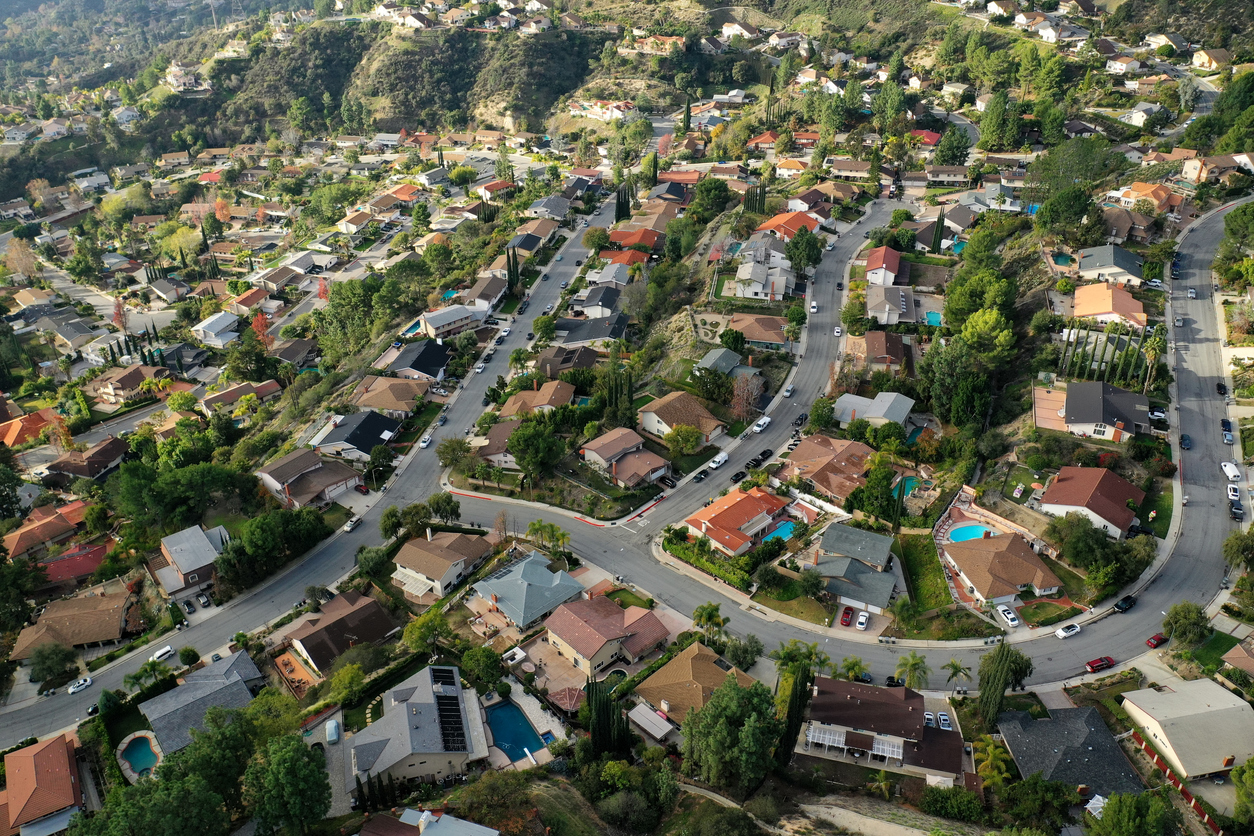California just took an important step to end its reliance on fossil fuels, thanks to a unanimous vote by the California Public Utilities Commission (CPUC) to end gas line allowances for new homes and businesses and shift to climate-friendly construction. For years, California gas customers have been paying more than $160 million a year in subsidies to connect new buildings to the gas system (through wires known as line extensions), which raises bills, contributes to the climate crisis, and increases air pollution that harms public health.[1],[2] These subsidies also prop up the gas industry and dirty, volatile fossil fuel infrastructure, when it is more important than ever that we transition to clean, renewable sources of energy.
The CPUC's newest decision, in accordance with the Sierra Club and many other environmental, environmental justice, and consumer advocates, will eliminate these subsidies for all customer classes: residential, commercial, and industrial starting in July, 2023. No more gas subsidies means bill relief for California customers, an estimated $164 million annually, according to the CPUC.[3] It would also facilitate the accelerated electrification of California’s homes and commercial buildings, a critical step towards meeting greenhouse gas (GHG) emissions reduction targets.
Gas utilities and industry lobbyists attempted to create carve-outs for themselves and their allies in the fossil fuel industry, but the Commission rejected all categorical exemptions, noting that “large non-residential customers are the most significant contributors to GHG emissions, making it especially important to adopt this policy change for this customer segment.”[4] Perhaps most encouraging, the Commission rejected exemptions for hydrogen, biomethane (misleadingly referred to as “renewable natural gas”), compressed natural gas projects, and select projects that gas utilities claimed would have “environmental and financial benefits.” As Sierra Club has pointed out, hydrogen and biomethane are expensive, often create negative air and water quality impacts for nearby communities, and their climate impacts are uncertain, at best. Electrification is a much safer, cleaner, and more cost-effective method of providing power to residential and commercial customers. With that as an available alternative to gas, we certainly should not be subsidizing the buildout of hydrogen and biomethane infrastructure.
In November 2021, CPUC staff issued a lengthy report proposing eliminating gas subsidies.[5] The report demonstrates that decreased demand for gas, thanks to decarbonization efforts in California, makes these subsidies an expensive and unnecessary handout to industry. Put more bluntly: why would we pay extra for customers to install gas when we know that the gas system will become obsolete? The CPUC’s proposed decision would eliminate this foot on the scale in favor of the expansion of expensive and polluting gas infrastructure. Sierra Club, in coalition with the California Environmental Justice Alliance, Natural Resources Defense Council, and Environmental Defense Fund, submitted comments and legal briefs urging the Commission to eliminate gas subsidies, without exception. The Commission echoed our coalition’s comments that gas subsidies conflict with California’s climate goals and legal mandates. And it agreed that gas subsidies are contrary to the state’s 2022 Building Code: this code, the first of its kind nationwide, requires electric heat pumps for space and water heating and electrification readiness in standard building design.[6] The CPUC additionally points out that eliminating gas subsidies would complement the California Air Resources Board’s proposal to require the sale of only zero-emissions space and water heaters by 2030.[7]
This decision will have beneficial impacts on climate, public health, and affordability. In the CPUC’s own words:
“The result will not only be significant reductions in GHG emissions but also improved quality of life and health for customers, hundreds of millions of dollars in ratepayer savings annually, greater equity for low-income customers, and greater certainty for builders, developers, and individual customers.”[8]
Climate
Gas, when combusted by heaters, water heaters, stoves, and other appliances, emits carbon dioxide (CO2) and nitrogen oxides (NOx), among other potent greenhouse gasses. To make matters worse, our gas infrastructure, including the pipelines that reach into our neighborhoods and homes, emits significant levels of methane, which has about 30 times the global warming potential of CO2.[9] In our current climate crisis, where extreme wildfires are increasingly common, and in a building market where all-electric building is often more affordable and more energy efficient than mixed-fuel buildings, subsidies for unnecessary, harmful gas line extensions were nonsensical and in direct conflict with California’s aggressive climate goals: to reduce emissions by 40 percent compared to 1990 levels by 2030 and to be carbon-neutral by 2045. Each new gas investment, subsidized or not, locks in gas emissions for decades.
Public Health
Gas not only harms our climate, it harms our communities as well. Gas appliances emit significant levels of NOx. Outdoor NOx pollution is associated with elevated levels of respiratory and cardiovascular diseases and shorter lifespans. Indoor NOx pollution, mainly from gas stoves, is associated with elevated asthma rates, as much as 42 percent higher than in homes without gas stoves.[10] And methane, the main component of fracked-gas, not only contributes to elevated asthma and cancer risk but also leaks at much higher rates than originally estimated. A Harvard study found that 3.3 percent to 4.7 percent of total methane extracted escapes over the course of transmission and distribution (i.e. gas pipelines).[11]
Photo by iStock.com/Spiderplay
Affordability
California has seen rising utility bills and gas subsidies, which have grown over the past four years in concert with increasing rates, exacerbate this affordability crisis. In its proposed decision, the Commission again cited Sierra Club and its allies, noting that eliminating gas subsidies is particularly beneficial to low-income customers, who “are not typically the ones benefiting from gas line subsidies given their lower rate of new home purchasing, yet they contribute towards these subsidies which increases gas rates for all customers.”[12]
We applaud the CPUC for voting to eliminate gas subsidies and not shying away from leading the fight against the fossil fuel polluters that are impacting our climate and health. More than ever, Californians need access to affordable, all-electric buildings that will create cleaner air and a healthier climate for all.
_________________________________________________________________________________
[1] Formally known as gas line extension allowances.
[2] CPUC Docket R.19-01-011: Order Instituting Rulemaking Regarding Building Decarbonization, Proposed Decision of Commissioner Rechtschaffen, at 70 (August 8, 2022).
[3] CPUC Docket R.19-01-01, Proposed Decision, at 66.
[4] CPUC Docket R.19-01-01, Proposed Decision, at 48.
[5] CPUC Docket R.19-01-011: Order Instituting Rulemaking Regarding Building Decarbonization, Assigned Commissioner’s Amended Scoping Memo and Ruling (November 16, 2021).
[6] CPUC Docket R.19-01-011, Proposed Decision, at 27.
[7] CPUC Docket R.19-01-011, Proposed Decision, at 27-28.
[8] CPUC Docket R.19-01-011, Proposed Decision, at 2.
[9] Understanding Global Warming Potentials, U.S. Environmental Protection Agency, https://www.epa.gov/ghgemissions/understanding-global-warming-potentials.
[10] Lin, Weiwei et. al., Meta-analysis of the effects of indoor nitrogen dioxide and gas cooking on asthma and wheeze in children, International Journal of Epidemiology, (August 20, 2013), https://academic.oup.com/ije/article/42/6/1724/737113.
[11] Sargent, Maryann et. al., Majority of US urban natural gas emissions unaccounted for in inventories, Proceedings of the National Academy of Sciences, (October 25, 2021), https://doi.org/10.1073/pnas.2105804118.
[12] CPUC Docket R.19-01-011, Proposed Decision, at 29.

